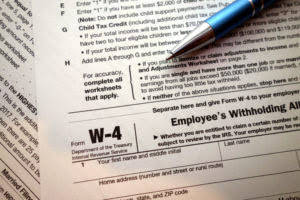Solved Cash flow from assets is defined as:Multiple
25/07/2022 15:57

The direct method takes more legwork and organization than the indirect method—you need to produce and track cash receipts cash flow from assets is defined as for every cash transaction. Factoring with altLINE gets you the working capital you need to keep growing your business. AltLINE partners with lenders nationwide to provide invoice factoring and accounts receivable financing to their small and medium-sized business customers. AltLINE is a direct bank lender and a division of The Southern Bank Company, a community bank originally founded in 1936.
Calculate Net Cash Flow From Assets
- Subtracting capital expenditures is crucial in this process as it helps ascertain the amount of cash generated after accounting for the necessary investments in capital assets.
- Many accountants prefer the indirect method because it is simple to prepare the cash flow statement using information from the income statement and balance sheet.
- Having a clear understanding of this concept can greatly benefit your financial decision-making.
- This could mean that the company needs to raise funds through debt or equity to cover the shortfall.
- Positive cash flow from assets is generally favourable as it indicates that the company generates surplus cash for growth or shareholder returns.
- Analyzing the results allows for a deeper understanding of your company’s financial health and helps guide strategic decision-making.
- This aspect of cash flow management plays a crucial role in how a company manages its capital structure.
When it comes to understanding how your business is managing its cash flow, one of the most important metrics to look at is the Cash Flow from Assets. Let’s walk through a simple step-by-step guide to help you calculate this crucial financial figure. To address these issues, businesses can implement cash flow improvement strategies such as regular monitoring, enhanced forecasting techniques, and meticulous cash flow analysis to ensure better cash flow management. The cash flow from assets (CFFA) can be alternatively termed as the free cash flow to the firm (FCFF). Putting all your marbles in a single basket is always a risky business strategy.
BAR CPA Practice Questions: Proprietary Funds Statement of Cash Flows
All the above-mentioned figures included above are available as standard line items in the cash flow statements of various companies. Cash flows can also arise from investments in new assets or divestments of existing assets. Capital expenditures for purchasing or upgrading assets represent cash outflows, while proceeds from selling assets represent cash inflows. The complexity of cash flow cycles can create difficulty in tracking and understanding the movement of funds within the organization. Discrepancies between reported and actual cash flows can indicate underlying issues with financial transparency and management. Then, calculate the financing cash flow, which involves activities related to raising or repaying capital, such as issuing or buying back shares or paying dividends.

How to Calculate Cash Flow from Assets
Subtracting capital expenditures is crucial in this process as it helps ascertain the amount of cash generated after accounting for the necessary investments in capital assets. This free cash flow figure holds significant importance as it indicates the company’s ability to meet its financial obligations, invest in future growth opportunities, and return value to shareholders. It serves as a vital indicator for investors and analysts to evaluate how efficiently a company manages its cash flows and utilizes its assets to generate revenue. By analyzing the cash flow from assets, stakeholders can gain insights into the company’s ability to meet its financial obligations, fund investments, and sustain growth over the long term.
- It’s an asset, not cash—so, with ($5,000) on the cash flow statement, we deduct $5,000 from cash on hand.
- Let’s analyze the operating cash flow formula and each of the various components.
- Cash flow from investing is included on a company’s cash flow statement along with cash flow from operating activities and cash flow from financing activities.
- This statement will give you an overview of how cash is flowing through your business.
- This may include cash from the sale of goods, interest payments, employee salaries, inventory payments, or income tax payments.
- Now, think of your business as having a similar system but on a much larger scale—this is essentially what cash flow from assets means in financial terms.
How to Create Positive Cash Flow

This indicates that a company’s operating activities are not generating enough cash to cover its expenses and investments. Cash flow analysis is essential because it enables businesses to assess their liquidity and solvency positions accurately. By analyzing cash flows from assets, you can identify any potential gaps between inflows and outflows of cash. This analysis allows you to make proactive adjustments in operations or financing activities to maintain a healthy cash position. Cash flow from operating activities does not include cash flow long-term capital expenditures or investment revenue and expense.

AccountingTools
- The statement of cash flow shows the main categories of cash flows, which are defined as cash flows from operations, investing activities, and financing activities.
- Let’s say we’re creating a cash flow statement for Greg’s Popsicle Stand for July 2019.
- The cash flow statement acts as a corporate checkbook to reconcile a company’s balance sheet and income statement.
- Altogether, a well prepared cash flow statement can greatly assist in analyzing a company’s financial health, ensuring that cash is being managed effectively, and identifying potential risks or opportunities.
- With the indirect method, you look at the transactions recorded on your income statement, then reverse some of them in order to see your working capital.
- By analyzing cash flows from assets, you can identify any potential gaps between inflows and outflows of cash.
- Liquidity is another significant dimension that cash flow from assets highlights.
With the indirect method, you look at the transactions recorded on your income statement, then reverse some of them in order to see your working capital. You’re selectively backtracking your income statement in order to eliminate transactions that don’t show the movement of cash. Using QuickBooks Accountant only an income statement to track your cash flow can lead to serious problems—and here’s why.
Cash Flow From Assets Formula Explained Definition & Calculation

Now that you have gathered and analyzed all the necessary financial information about your business’s cash flow from assets, let’s move on to calculating operating cash flow without missing any important steps. Whether you’re an accountant, a financial analyst, or a private investor, it’s important to know how to calculate how much cash flow was generated in a period. We sometimes take for granted when reading financial statements how many steps are actually involved in the calculation. When your cash flow statement shows a negative number at the bottom, that means you lost cash during the accounting period—you have negative cash flow. It’s important to remember that long-term, negative cash flow isn’t always a bad thing.




















